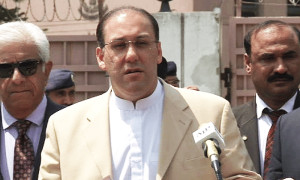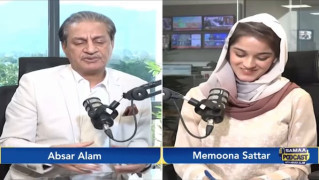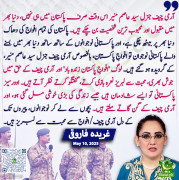Syed Haider Imam
Chief Minister (5k+ posts)
Karachi stock Exchange always CRASHED when there is no correction , get ready since bubble is only growing...........just to burst.
Sell and get out of market. Don't be greedy, its sucks. It will suck your life time savings. This happened many times since 2002
Sell and get out of market. Don't be greedy, its sucks. It will suck your life time savings. This happened many times since 2002
میں نے ١٤ اکتوبر ٢٠١٤ کو لکھا تھا پاکستان کی اسٹاک مارکیٹ کا گرنا ناگزیر ھے . مارکیٹ گری تو نہیں مگر ھر روز ایک نیے ریکارڈ بناتی چلی گئی
پاکستان کی اسٹاک مارکیٹ ہی کیا ، تمام دنیا کی مارکیٹ ریکارڈ پر ریکارڈ بنا رہی تھیں
چاھے وہ
"PIGS" COUNTRIES
کی مارکیٹ ھو یا یورپی مارکیٹ یا امریکا کی مارکیٹ
٣٥ سالوں میں امریکا کا قرضہ ١ ٹریلین ڈالر سے ١٨ ٹریلین پر چلا گیا مگر حکومتی چالوں سے مارکیٹ بڑھتی ہی چلی گی وہ بھی بےغیر کریکشن کے ، جو کے مارکیٹ کی روح سے ھے ہی غلط
کہا جاتا تھا کے امریکا اور پہلی دنیا کی مارکیٹس فری اکانومی ہیں
کہا جاتا تھا کے امریکا اور پہلی دنیا کی مارکیٹس کپتلسٹک
Capitalistic Economies
ہیں مگر یہ سب باتیں غلط ثابت ھو رہیں ہیں . یہ سب مارکیٹس اور اکانومی کب سے سوشلسٹ ھو چکی ہیں .
کوئی بھی مارکیٹس حکومتی سہارے کے بغیر نہیں چل رہیں ہیں
اب اتے ہیں گولڈ مارکیٹ کی طرف ، جب جرمنی ، فرانس اور دوسرے ممالک نے امریکا کو پاگلوں کی طرح ڈالر چھاپتے دیکھا تو ان ممالک نے اپنا سونا جو فیڈرل ریزرو کے پاس تھا ، واپس کرنے کا مطالبہ کر دیا
مطالبہ کرنے کی دیر ہی تھی ، سونے کی قیمتوں میں گراوٹ شرو ھو گئی
پھر روس کو سبق سکھانے کی باری ای تو تیل کی قیمتوں کو گرانا شروع کر دیا گیا
اگر تیل کی ڈیمانڈ بینالاقوامی طور پر کم ہوئی ھے تو اسکا ظاہر مطلب ھے کے دنیا کی اکانومی کی گروتھ ریٹ گر رہی ھے
اس صورت میں اسٹاک مارکیٹ بڑھنے کا کیا مطلب ھے ؟
تیل کی کمپنیان پاکستان کی اسٹاک مارکیٹ کا ٣٢.٩ فیصد حصہ بنتا ھے تیل کی قیمتوں میں
٤٠ فیصد سے کمی واقع ہوئی ھے مگر اسٹاک مارکیٹ وہیں کی وہیں کھڑی ھے
کیا یہ عقل میں انی والی بات ھے ؟

The Pakistan Stock Market (KSE100) increased to 32084.16 Index points in December from 31197.98 Index points in November of 2014.
Stock Market in Pakistan averaged 6959.12 Index points from 1990 until 2014, reaching an all time high of 32148.78 Index points in December of 2014 and a record low of 538.89 Index points in June of 1990

Stock Market in Pakistan averaged 6959.12 Index points from 1990 until 2014, reaching an all time high of 32148.78 Index points in December of 2014 and a record low of 538.89 Index points in June of 1990

Last edited by a moderator:


































